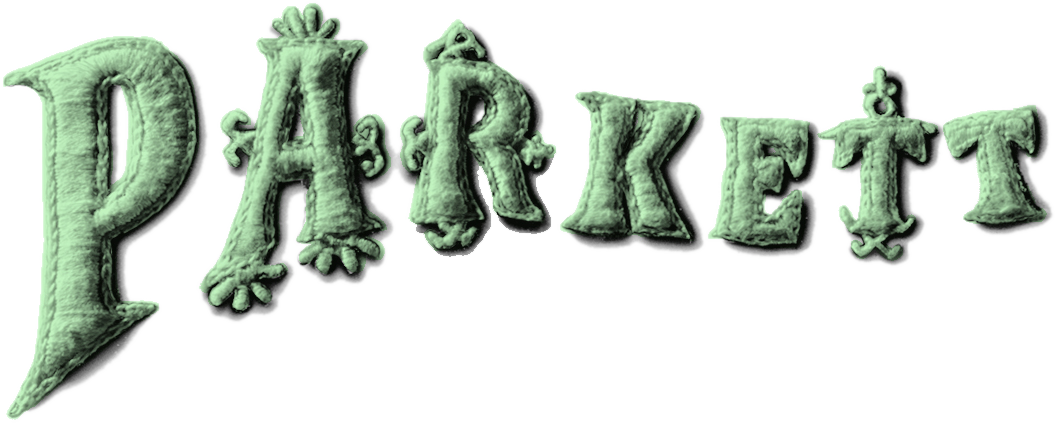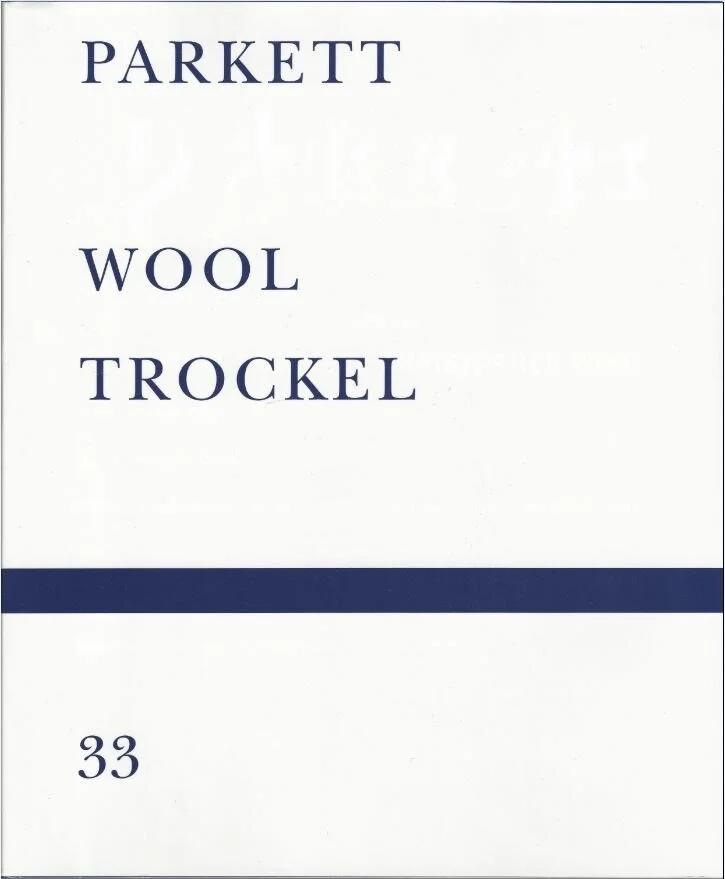Parkett Vol. 33 - 1992 | Rosemarie Trockel, Christopher Wool
Rosemarie Trockel
Read a selected text (PDF)
View edition
Christopher Wool
Read a selected text (PDF)
View edition
Insert: Adrian Schiess (PDF)
Spine: Sam Samore
Cumulus:
On Documenta IX by Chris Dercon (PDF)
On the situation of contemporary artists in Russia by Levi Strauss (PDF)
Miscellaneous:
Not Vital Interview with Louise Neri (PDF)
Out of print. To inquire about sold out books, contact us
Browse Selected Texts and more on the Collaboration Artists
Artist Insert
Editorial
Three and a half years ago, we launched our first double collaboration with Martin Kippenberger and Jeff Koons, two younger artists—one from Europe one from America—who take entirely different approaches within their shared topos of ensuring that the art public’s supply of provocation does not run dry. Many double collaborations have followed since, each motivated by distinct and divergent considerations: enduring and urgent issues pertaining to the body led to the juxtaposition of Louise Bourgeois and Robert Gober (No. 27); the observation that heightened sensibility toward the concrete epidermis of a work can yield a trenchant regeneration of diverse views of abstraction inspired the collaboration of Günther Förg and Philip Taaffe (No. 26), and a concern with the anonymous image of wo/man gave rise to a comparison between Christian Boltanski and Jeff Wall (No. 22).
Not infrequently, extraordinary happenings occur in the process of preparing a double collaboration, points of contact and coincidence are found where least expected, or the artists themselves seek interpretative accord. Rosemarie Trockel and Christopher Wool have come together to create the austere yet playful dust jacket on the issue you are now holding—a unique event for Parkett. On second thought, the jacket may be a shirt, one of the white shirts that often appear in Trockel’s work, or the white background of the pictures Wool inhabits with hard signs. Trockel’s predilection for logos, trademarks, and symbols inspired her reference to the design of Bibliothek Suhrkamp books—the quintessential and ubiquitous emblem of cultivation in German-speaking countries—and was to serve as a source for the registered trademark transfiguration of Wool’s name. Woolly arguments, however, have induced the international wool lobby to prohibit the use of their logo although, to the best of our knowledge, bookstores are not in the habit of selling sweaters.
The distinctly self-reflexive approach that marks this issue is manifest in the layout of Christopher Wool’s section, designed by the artist using photographs he took of his own paintings. We are proud to present this first extensive selection of Wool’s photographs, including the untitled edition showing a black dog created especially for the readers of Parkett to hound them with memories from his RUNDOGRUN Insert for Parkett No. 22. Self-reflexion informs Rosemarie Trockel’s Parkett edition STUDIO VISIT; the picture shows the view as seen by Trockel’s left eye echoing a drawing by Ernst Mach of 1870 (in Analysis of Feelings). As for the presence of her dog Fury, who has also visited our offices, we shall let sleeping dogs lie. Enough, the intensity of quiescent observation in ear and eye: in this issue, the gaze of the second of Sam Samore’s four “designs” for the spine of Parkett is eclipsed from view, along with our own identifying logo. As always, monographic essays and articles on other topics of general or current interest complement our collaboration ensemble. Renowned British writer, Marina Warner, addresses the changing image of gender balance in the arts, while Adrian Schiess has filled the pages of Insert with his dynamic concept of color flow
Table of Content
Penis Plenty of Phallic Lack: Exit Mister Punch by Marina Warner
On Dennis Oppenheim by G. Roger Denson
Rosemarie Trockel
Provocation and Poetic Enigma by Véronique Bacchetta
As Objects of . . . by Barrett Watten
How Feminist are Rosemarie Trockel’s Objects? by Anne M. Wagner
Christopher Wool
Cave Canem by Jim Lewis
Wool’s Word Paintings by Greil Marcus
In the Shadow of Painting by Jeff Perrone
Here Is Something You Can’t Understand by Diedrich Diederichsen
Adrian Schiess, Insert
The Croocked Path by Camiel van Winkel
Not Vital, Common Currency, Les Infos du Paradis, by Louise Neri
Am I Now Getting Sentimental? Cumulus from Europe by Chris Dercon
Cumulus from America by David Levi Strauss




